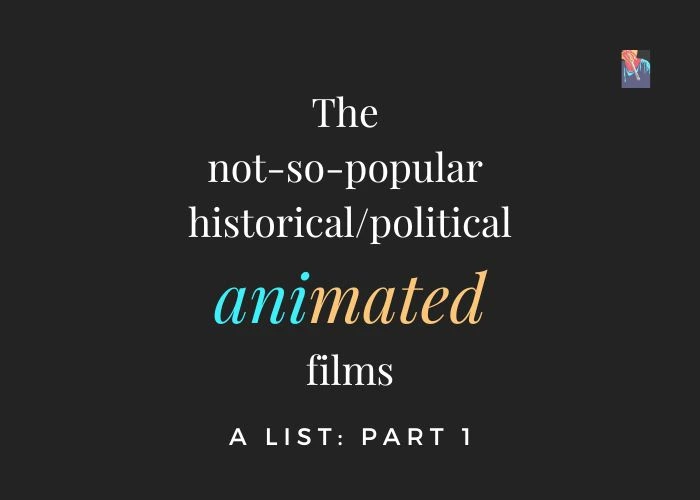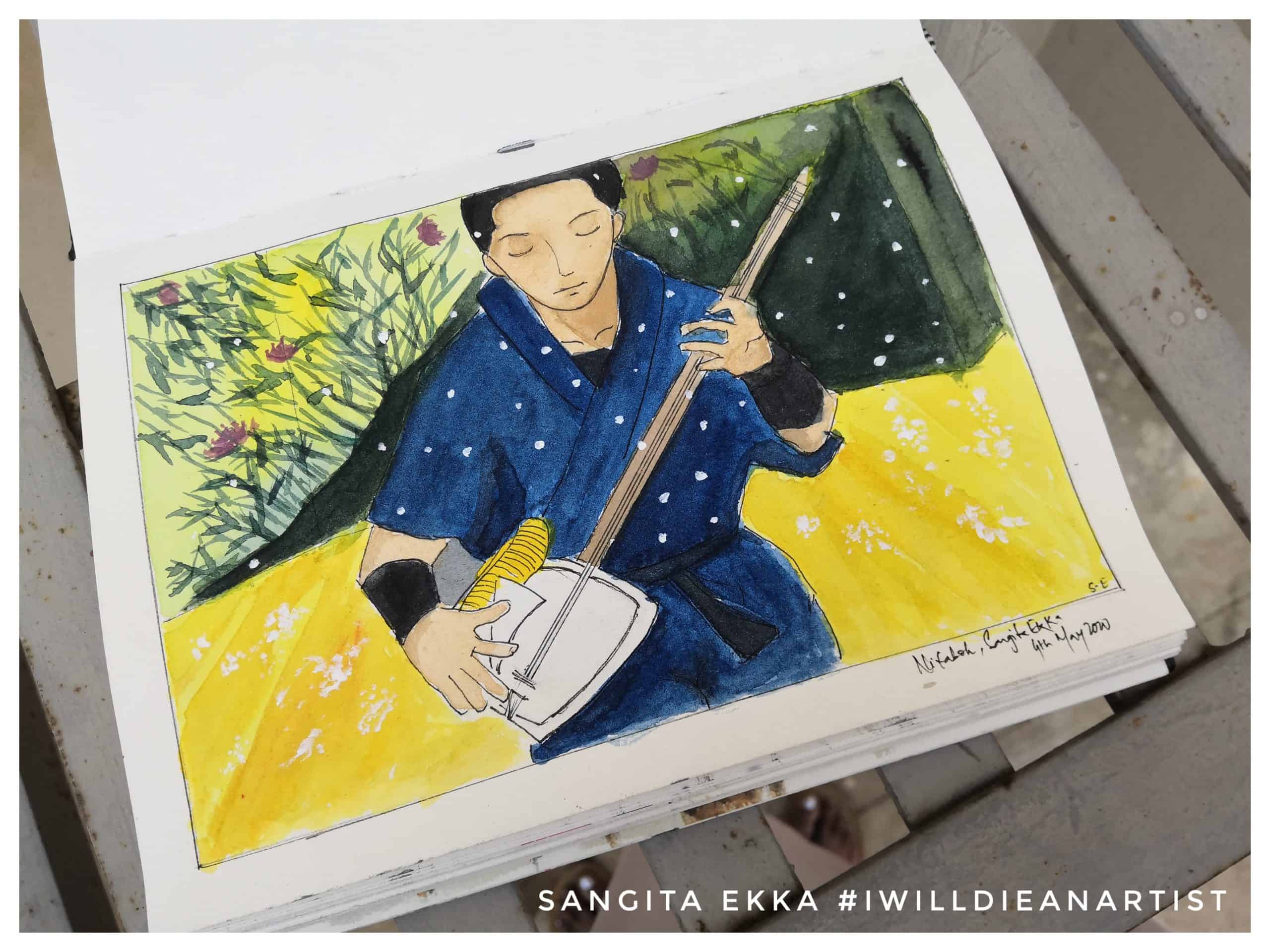J.R.R. Tolkien, a celebrated and loved fantasy writer, has asserted that there is no such thing as writing for children. Animated content of any length and volume is often perceived as “for children” material, depriving many adults of its richness and depth.
While themes of anthropomorphism, fantasy, and romance often dominate animated content, the industry is also ripe with short and feature-length films featuring historical and political anecdotes.
Animators and storytellers have often infused their insights into multiple films, and below is the list for the first part of this series.
AD
#1 Bombay Rose
Gitanjali Rao is an Indian animator and is yet to become a household name in her own country. With decades of work produced, her short films and feature-length animation have been screened and reviewed globally.
Her debut feature film – Bombay Rose, is a mature take on ever-existing religious, class, and political conflicts in India. The movie premiered at the Venice Film Festival in 2019 and was released on Netflix in December 2020.
Gitanjali Rao weaves an extraordinary story out of ordinary lives in which people dare to love amidst the unending chaos and bigotry. A Hindu flower-selling girl, falling in love with a Muslim refugee, is a recipe for political unrest in India. Still, the film focuses on the couple, their wish for togetherness, and everything else that matters in love.
#2 Rest in Paper
Part of the Lost Migrations anthology, Rest in Paper focuses on the historical event of the 1947 partition, specifically on Pakistani refugees.
A short film, Rest in Paper, explores the aftermath of the event, including the gory details from the 1947 Amritsar train massacre. A film by Haseeb Rehman, it centers on a refugee, Ghulam Ali, who wants to be in the Indian army but gets drowned in paperwork.
In a stunning 2D rendering, Rest in Paper explores the continued second-class status of refugees, anti-India and anti-Pakistan sentiments, and the never-ending to and fro across the newly drawn borderline on land, water, and air. Ghulam Ali’s papery existence and journey finally rest inside a file in a tryst with destiny to find a home and a nation.
#3 Sultana’s Dream
For wars women don’t wage, they face the brunt of violence as rapes, murders and homelessness.
Inspired by feminist literature by Rokeya Sakhawat Hossain, Sultana’s Dream begins with the stark reminder of systemic violence against women after the partition during which about 75,000 to 100,000 women were abducted and raped. Women who escaped were rejected by their families. Some homecoming!
The film sets the narrative by painting an alternative reality where women roam free, own businesses, have shops named after them, while men are in their rightful place – locked in their homes.
Directed by Sandhya Visvanathan, Aniruddh Menon, Shoumik Biswas, and Aditya Bharadwaj, Sultana’s Dream is also a part of the Lost Migrations anthology and centres on elderly Sultana, nestled in contemporary Kolkata, who finds herself remembering the ordeals of partition.
In a 10-minute short film, the creators explore women’s choices or lack thereof and aim to establish what freedom truly means for women. The film portrays the different types of violence against women in Lahore, Peshawar, Amritsar, and Rawalpindi, how women were stripped of their clothes and their identities, and were forced to die as an attempt to “save” themselves.
#4 Seabirds
The third and last part of Lost Migrations, Seabirds, is relatively lightweight compared to Rest in Paper and Sultana’s Dream.
Over an intimate conversation with her grandmother, eight-year-old Nithya learns about a traditional Chettinad (Tamil Nadu state) community dish, Kavanarisi, whose origins are from Burma (present-day Myanmar).
A short film directed by Savera Jahan, the story focuses on Nithya’s ancestors who migrated from Burma to far-off lands, including Colombo, Rangoon, Chittagong, and Jakarta, during the Japanese invasion of Burma. It focuses on nostalgia, longing for a long-lost home, journeys accomplished on foot, and how identities are shaped from more than one place.
#5 Nekem az élet teccik nagyon aka I Like Life A Lot
I Like Life A Lot is a Hungarian animation film in which each frame is hand-drawn by kids and their teachers to portray the life of Hungary’s Komló settlement (a mining centre) and labour exploitation in 1977.
Directed by Kati Macskássy, this short film is one of the few animations where the story is told from a child’s perspective. Short films like Only a Child and feature-length films –Ushiro no shoumen dare aka Kayoko’s Diary aka Who’s Left Behind are similar films that portray an innocently accurate account of historical events.
There isn’t enough information about Roma labour exploitation, but some corners of the web point to their struggle and fight for rights. The film begins and ends with children’s narration about their parents’ earnings from selling coal, social life, their dreams, and their attitude towards the cards they were dealt.
Final Thoughts
While the Indian subcontinent has consumed animated content for decades, the contributions to this industry are budding. From a gender perspective, Gitanjali Rao and Kati Macskássy have brought their unique perspectives on important social issues to the animation medium.
The Lost Migrations films were brought to life under the supervision of the peace-building initiative Project Dastaan and funding from the National Geographic Society.
It is likely that soon, we will see more independent projects that reject boundaries and bring more cultural, historical, political, and intellectual flavors to animation.
AD



